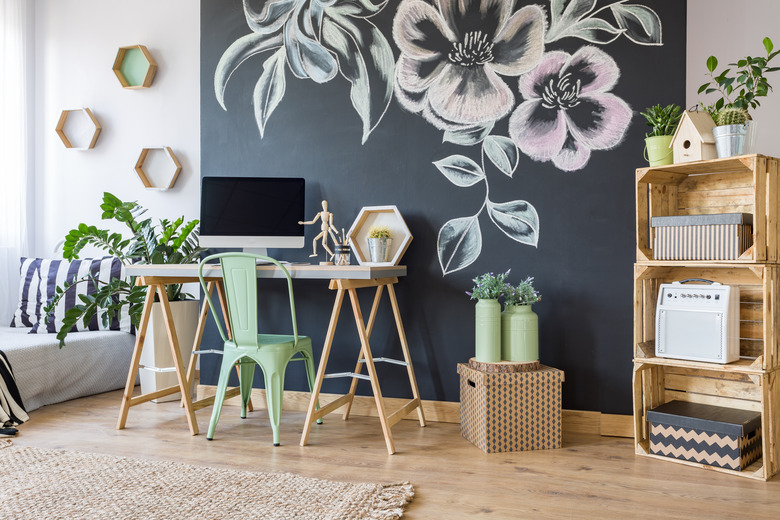How To Paint Over Chalkboard Paint
We may receive a commission on purchases made from links.
Chalkboard paint was all the rage a few years ago, but now that the distressed chic trend is over, a lot of people are looking to cover their chalk-dust-covered creations with something a little more sophisticated. If you are among those who want to get rid of this schoolhouse-inspired style in your home, the easiest solution is to simply paint over the chalkboard paint, but it is important to do sufficient preparation prior to applying your paint, or you may never escape the ghost of the chalkboard paint trend.
Clean the Chalkboard
Clean the Chalkboard
Start out by cleaning any chalk marks from the surface to avoid having it mess up your new paint job. Use a damp microfiber cloth to wipe away any remaining chalk dust, starting from the top and working your way down. It is OK if the end result looks hazy as long as the dust is gone. If there are any deep scratches or other damage on the surface you plan to paint, fill these in with spackle using a putty knife to smooth it so it is level with the rest of the surface.
Scuff Up the Surface
Scuff Up the Surface
Use 180-grit sandpaper to scratch up the surface of the chalkboard paint. This is important because it will help your primer stick to the surface. Make sure to cover the entire surface evenly. When you are finished, use soap, water, and a sponge to remove any dust on the surface. Allow it to dry completely before applying primer.
Cover the Paint With Primer
Cover the Paint With Primer
Apply a high-quality, oil-based primer using a synthetic paintbrush or synthetic roller. For rollers, use a shorter nap that is close to 1/4 inch for smooth surfaces or a medium nap that is around 1/2 inch for lightly textured surfaces. Allow the first coat of primer to dry completely overnight before checking to see if it has fully covered the surface of the chalkboard paint and if not, apply a second coat. Allow the primer to dry overnight before painting.
Apply Your Paint
Apply Your Paint
You can use all types of paint with oil-based primer, including latex, oil, and acrylic. Use the same type of brush you used to apply primer for the paint. Work from the top down, painting with long, even strokes. Apply at least two coats of paint to ensure sufficient coverage, waiting until the paint is dry to apply each successive coat. When you are satisfied with the results, allow the paint to cure overnight.
